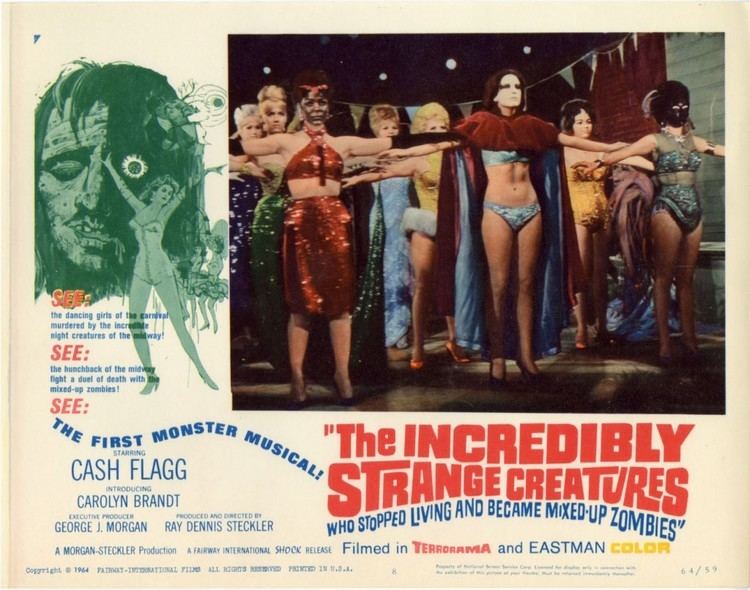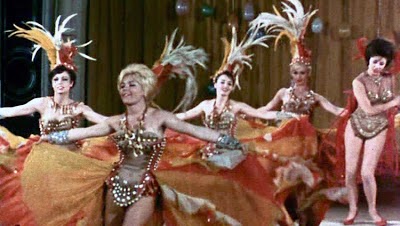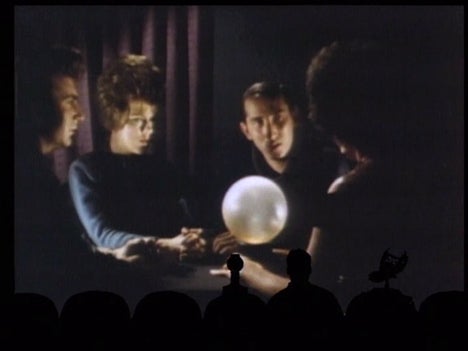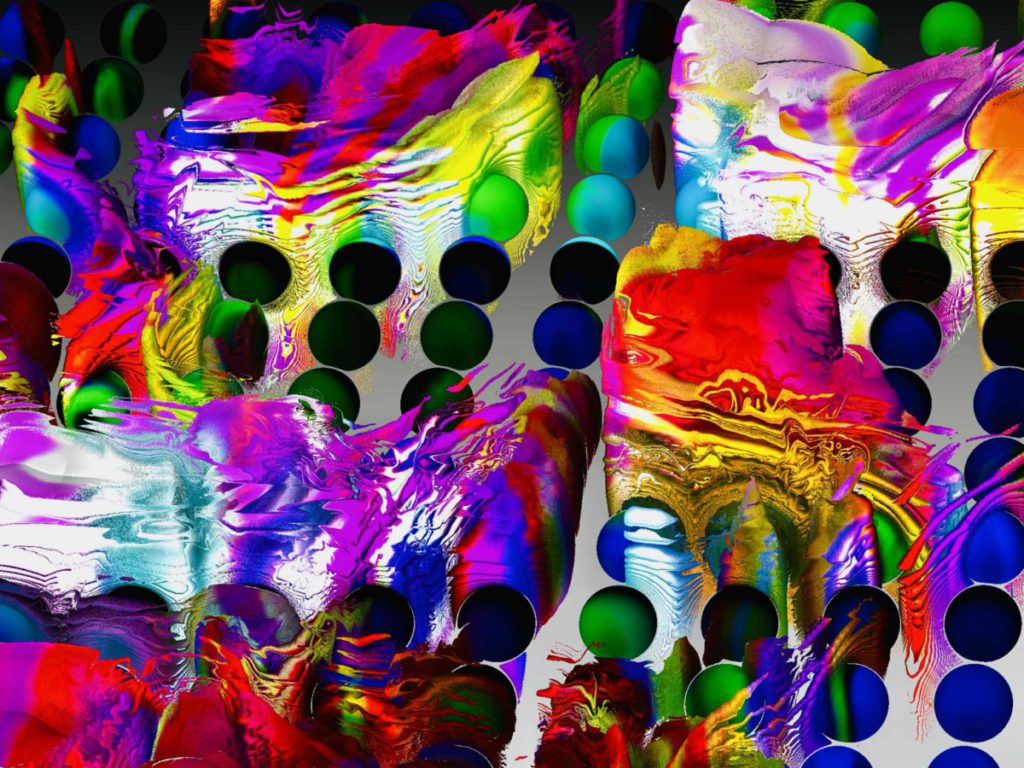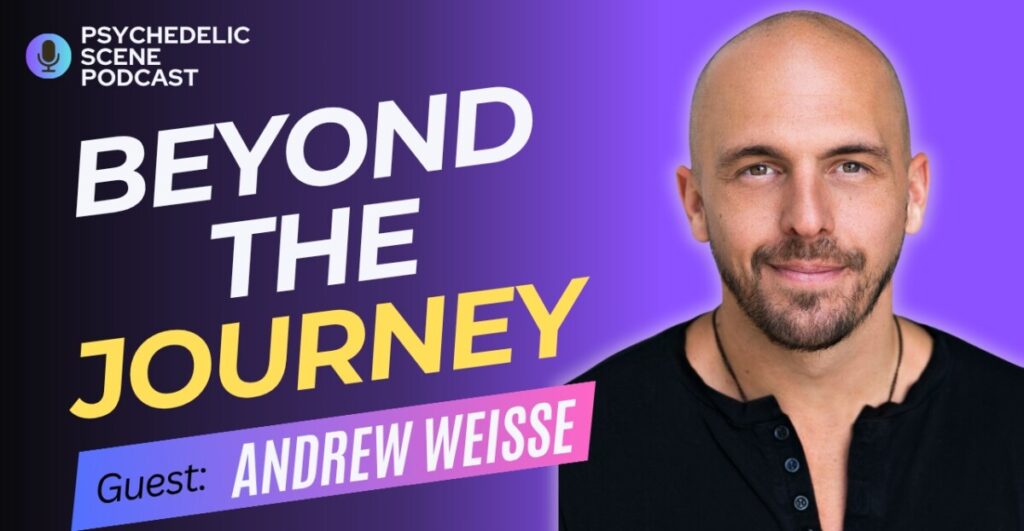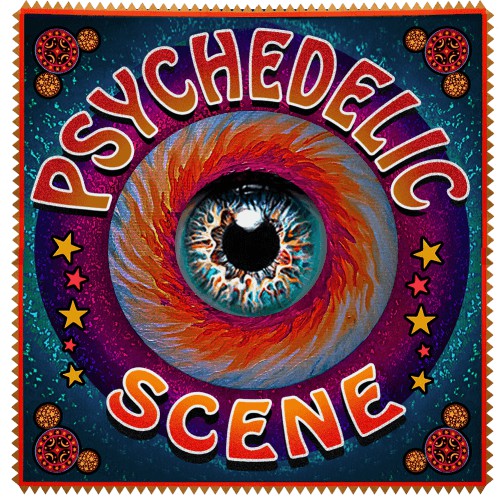Psychotropic Cinema: THE INCREDIBLY STRANGE CREATURES WHO STOPPED LIVING AND BECAME MIXED-UP ZOMBIES!!?
Psychotropic Cinema: THE INCREDIBLY STRANGE CREATURES WHO STOPPED LIVING AND BECAME MIXED-UP ZOMBIES!!?
Ray Dennis Steckler is a true independent film pioneer. While independent film is an integral part of the movie landscape today, back in the 1950s and 60s, independent films were produced and (more importantly) distributed outside of the traditional Hollywood industry. In the years before cable, the internet, and streaming services, unaffiliated producers would take advantage of the nationwide network of second-run theaters, rural roadshows, and drive-ins. The movies that were shown there would often feature sensational titles and scandalous themes, and, not beholden to studio censorship or “community values”, regularly pushed the envelope of what could be shown on screen. Often, emphasis was placed on the film’s marketing or advertising, sometimes renaming an older film with a “punchier” title and getting attention (selling tickets) with stunts or gimmicks designed to thrill the audience.
It is within this context that The Incredibly Strange Creatures Who Stopped Living and Became Mixed-Up Zombies!!? was released. This 1964 feature, billed as “the first monster musical” defies analysis and comprehension. Nothing can prepare you for it. The film defies categories, genre, logic, and coherence. And yet–it is so unique and unusual that it commands your attention for every second of its 82 minutes. Not unlike the psychedelic experience, describing it just doesn’t do it justice. It needs to be experienced. It cannot be labeled as a “bad film” because that label implies a standard by which the elements are judged. Similar to Beyond the Valley of the Dolls, the film’s pleasures are found in its campiness. It’s a slapdash aesthetic with bare-bones production and set design.
RELATED: Psychotropic Cinema: Beyond the Valley of the Dolls
Some cinema lovers don’t like “so bad they’re good” movies, disdaining entertainment like The Room, Plan 9 From Outer Space, or Don’t Stop the Music as incompetent trash. But if a movie’s worth can be judged by how much joy and entertainment it provides its audience, then ICS is priceless.
I first became aware of it through the writing of 70s rock critic icon Lester Bangs (the article in question, “The Day the Airwaves Erupted” was first published in Creem magazine, in March 1973. If you are intrigued, read the whole thing; it’s magnificent). After describing a fantasy in which armed leftist groups take over TV stations to program subversive content, the essay pivots to describing the experience of watching the movie when broadcast at 2 AM, coming across it while flipping channels. Lester astutely observed: “…it doesn’t just rebel against, or even disregard standards of taste and art. In its universe, such things as standards & responsibility have never been heard of. It is this lunar purity which largely imparts to the film its classic stature.”
That lunar purity extends to the film’s plot, characterizations, and its melding of different genres combined with horror tropes. While it is not scary or suspenseful in any way, it does have a surprisingly high body count. The film’s premise—a man in a carnival is hypnotized to murder—is also the plot of The Cabinet of Dr. Caligari, that silent horror classic. And yet it’s a musical–full-blown Vegas production numbers with chorus girls in outlandish costumes; at least four singers, emoting weird strange original songs, with some off-key singing. The music resists description. There is an early 60s pre-Beatles rock-n-roll vibe–but most songs are uncategorizable. The songs are meant to be performances like those of the fairground’s cabaret nightclub, The Hungry Mouth. Some are solo numbers, while most utilize a chorus of showgirls dancing to awkward choreography. The one song closest to rock music is a riff on “The Twist.” The songs all have baffling lyrics, and one number, “Choo Choo Cha Boochie,” features a statuesque showgirl who looks like a gangster’s moll singing while in the background we hear screaming.
The plot: Jerry is fascinated by the town carnival, and is drawn to the Gypsy fortune teller Estrella and her seductive sister Carmelita…actually, the plot doesn’t matter. Nothing in the film is like anything on Earth–the characters don’t act, behave, or talk like human beings, especially Jerry’s best friend Harold, played by the iconically named Atlas King. Atlas sports a gigantic pompadour hairstyle and an incomprehensible Greek accent. Make sure subtitles are on so you can comprehend Harold’s lines.
Many viewers ask why. Why is it a musical? Why is the acting so unusual? Why, despite the many strange and incomprehensible production choices, does the film look so good? Finally, why is the film even remembered and available to a contemporary audience? After all, there are countless “bad movies” produced, dating back to the medium’s inception. But very few are still delighting and entertaining viewers more than 60 years later.
As for why a musical—director Steckler had friends who were songwriters, looking for a vehicle for their unpublished songs, and other friends who were dancers. The dancers had recently inherited costumes and props from the LA nightclub Moulin Rouge, which had gone out of business. As for the acting, Steckler preferred to cast his friends and family members. Making films with a low (or in some cases no) budget, he couldn’t pay his cast or crew. Steckler’s wife, Carolyn Brandt, plays Marge, the first victim of the stabbings. For the lead role of Jerry, Steckler cast himself, using the fabulous stage name of Cash Flagg. The previously mentioned Atlas King was Steckler’s roommate and had helped the production with a $300 investment. He was so new to America that he didn’t speak English—he memorized and said his lines phonetically, which adds to the surreal quality of the film.
It looks great because the film, with artistic lighting and dynamic framing of the images, was shot by famous cinematographers Vilmos Zsigmond and László Kovács (their first credit), who were getting their union cards and gaining valuable experience.
Is the film psychedelic? Not purposely, or in concept. But the strangeness of the scenes, the unusual acting choices, the bizarre makeup, and the weird plot elements are all mind-expanding. The device used to hypnotize Jerry is a “Hypno-Wheel” of spinning black-and-white strips, and induces an altered point of view, with unusual camera angles. The masks of the deformed zombies are psychedelic, with melted skin and unnatural features. The film’s most psychedelic aspect is a five-minute dream sequence featuring bizarre face paint, a dream ballet, and in-camera special effects incorporating dissolves and double exposures, all set to a trippy soundtrack incorporating backward fairground music and electronic bleeps.
Director Ray Dennis Steckler made fascinating, uncategorizable movies throughout his career, and several deserve to be seen and re-evaluated for their originality and iconoclasm. For anyone curious, I recommend 1965’s Rat Pfink A Boo-Boo, which is almost indescribable, or 1969’s Body Fever, a sunlit neo-noir about private eyes and stolen heroin with fascinating documentary footage of late 60s L.A. landmarks. TISCWSLABMZ is his finest work. True to his roots in grindhouse roadshow exploitation cinema, the film was renamed several times (with no changes to the footage), and is sometimes known as “The Diabolical Dr. Voodoo” or “Teenage Psycho Meets Bloody Mary”. For a gimmick, he would hire actors to wear monster masks and run down the theater aisles, grabbing at patrons and spooking them during screenings.
The Incredibly Strange Creatures Who Stopped Living and Became Mixed-Up Zombies!!? is available on Blu-ray and DVD in multiple editions. It is part of a career-spanning box set of 20 Steckler films, remastered and lovingly restored with copious commentaries and bonus features from Severin Films. It is available for streaming on Tubi, Amazon Prime, and Apple +.
The Lester Bangs essay is available in his book Psychotic Reactions and Carburetor Dung.
https://severinfilms.com/products/incredibly-strange-steckler-box
Gallery
Recent Articles
Artist Spotlight: Doug Leed
•
December 9, 2025
Podcast with Andrew Weisse: Beyond The Journey
•
December 5, 2025
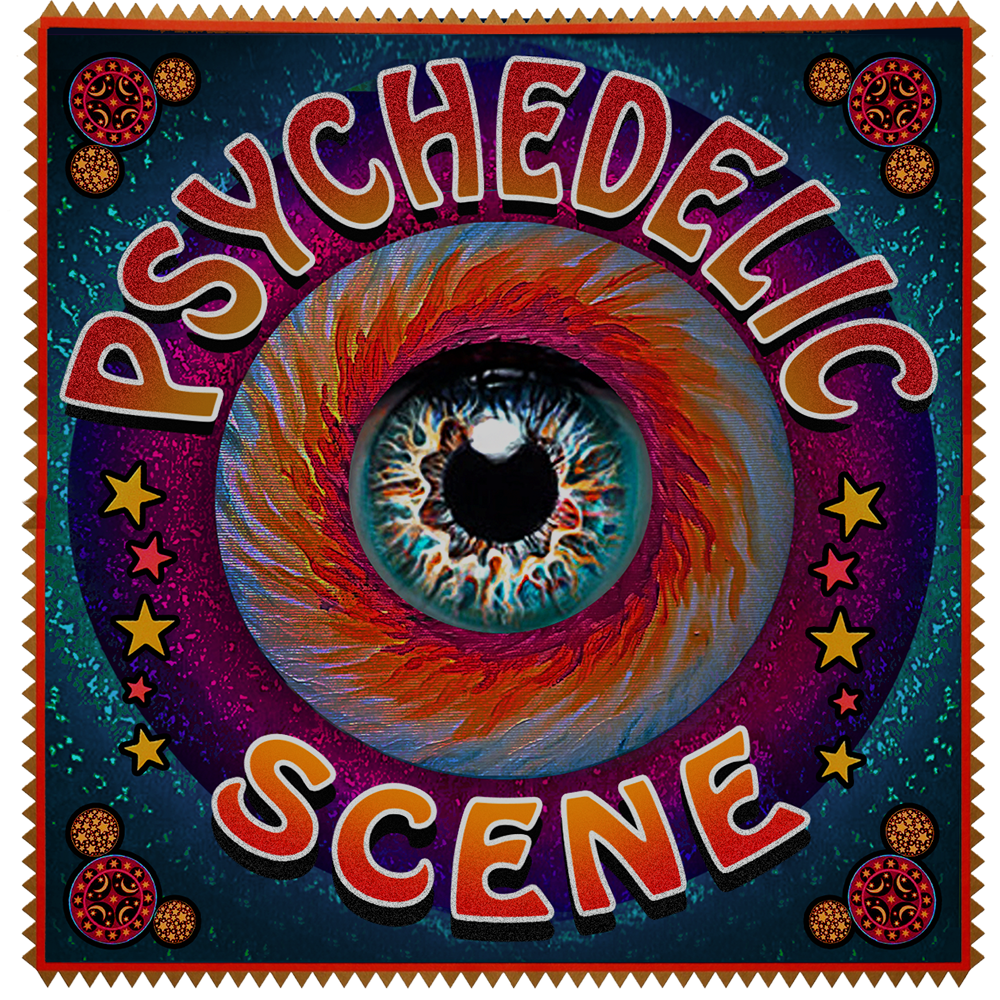
Loading...
The Club Is Open by Radderall & Muzzy Fossa–Album Review
- Bill Kurzenberger
